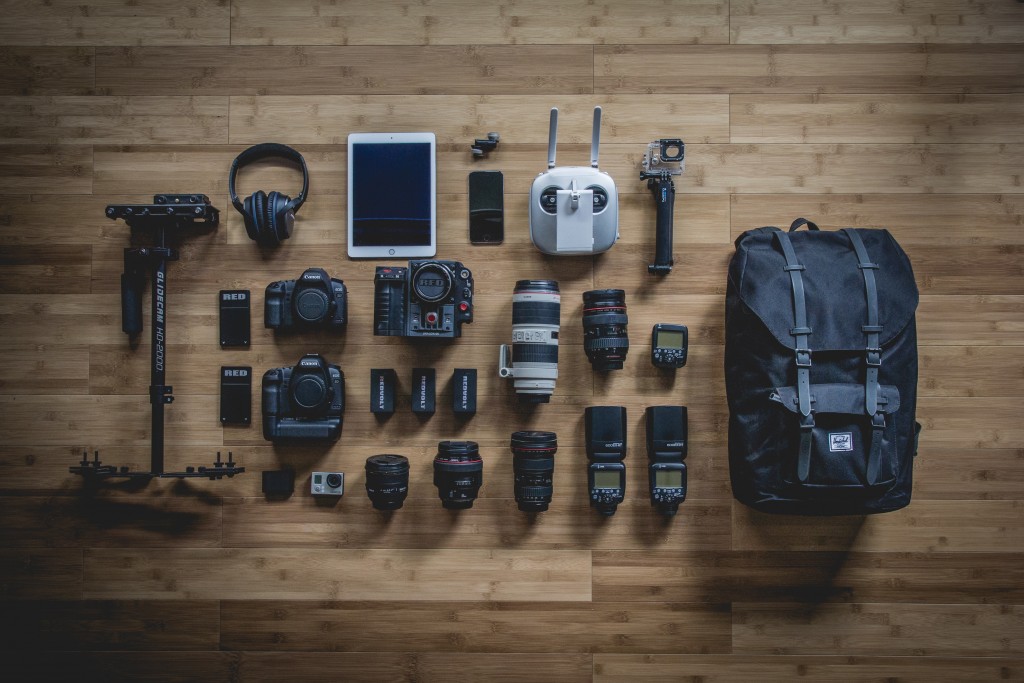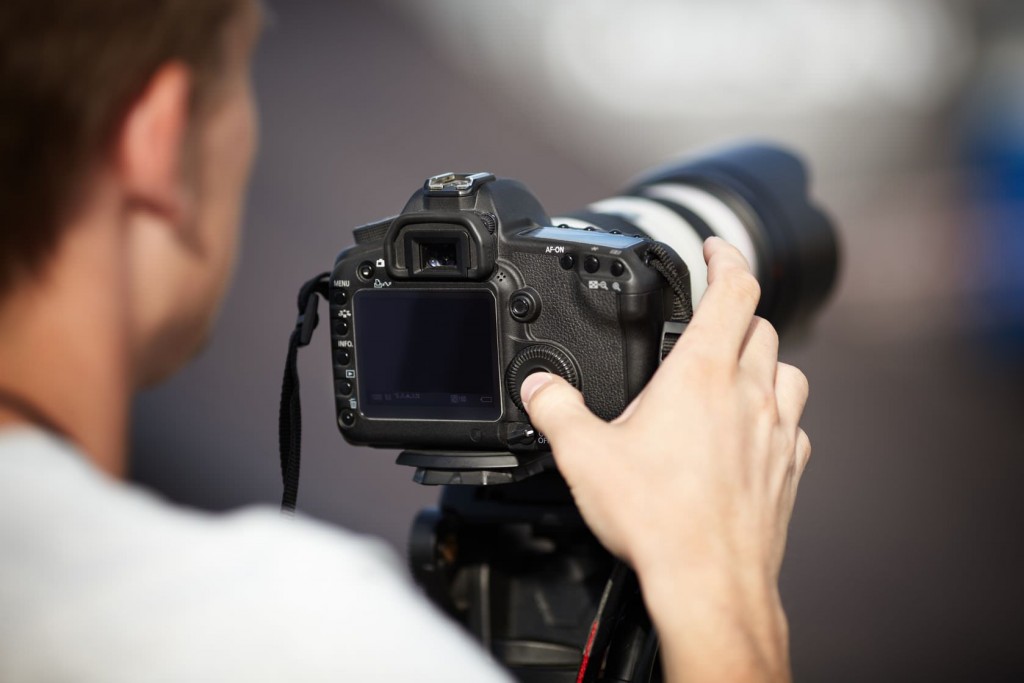If you’ve attended even just one congress or trade fair, you already know that they can be crowded and busy and, therefore, quite hard to photograph…
Nevertheless, convention photography can also be very exciting - many of the things you find on the exhibition floor are unique and brand new, which turns them into interesting photography topics.
The great doubt is: who is going to take pictures of your booth, products and clients?
First of all, you must figure out how you plan to use the exhibition pictures - will they be used as a promotional marketing tool? Or only for internal purposes? This will determine how much you should invest in a photographer ... or in a camera!
Below you'll find the most common options: the trade show's official photographer, your own photographer or your own talent!
Who will you pick?

Are you using the trade show photographer?
The official event photographer is always a safe option. He surely is an expert in this type of environment, and knows how to make it fast and easy. Perhaps… too fast… The truth is that he won’t be dedicating much time to your booth and products, as he probably has many other exhibits to shot. On average, the trade show photographer spends around 15 to 60 minutes shooting each booth. So, if you want to have dedicated and personalized pictures, you probably should go for the plan B... or C.
Are you hiring a photographer?
While planning your exhibition, it is essential to pre-qualify photographers who have experience in this kind of shooting. Your photographer must be capable of handling the demands of producing oversized, absolutely clear and appealing trade show display images. Don’t forget to:
- Ask for references. Find out if the photographer has experience in Convention Photography and if his previous clients were happy with the results.
- Request a portfolio of his most recent works.
- Prior to the shoot, discuss in detail the type, number and variety of shots you want. This way, you will hardly be disappointed with the outcome.
- Set a price that includes everything. Photographers generally provide high quality shots, but the services may be expensive. When establishing a price, don’t forget to consider the extras, like the travel costs.

Are you taking the pictures yourself?
First of all, you should really be capable of doing it - taking pictures at trade shows is not for beginners and amateurs.
You also need to be well equipped with a DSLR camera, the right zoom lens, a flash, a tripod and the obvious supplies: extra batteries and memory cards, a cleaning kit, etc…
If you think you fit this criteria, we have some little tips for your photo session:
- Plan ahead. It is important to define a shooting schedule. Create a list of what you want to photograph: the awards ceremony, a special guest, keynote speakers, a product presentation…
- Avoid the rush hours. It is wise to arrive as early as possible to avoid the crowd. This way, you can take good pictures of the products without a sea of heads and arms in between.
- Size matters. The size of the digital file is key: the larger, the better. Ideally, your pictures should have 12 - 16 (or more!!) megapixels.
- Use uncompressed raw files. It is always a good idea to use a file that doesn’t need to be compressed, so that you can have large prints that do not look pixilated.
- Have an external flash. The biggest problem with indoor venues is low light levels. Have an external flash in your backpack, you might need it.
- Don't forget your wide lens. Surrounded by thousands of booths and people, you will surely want to take pictures that show the whole environment. Wide lens are a must for that! You can also use a fisheye len and get an unique perspective of the event!
- Think about the permissions you might need. Some events or people do not allow photography or do not allow flash photography… Besides, in general, interior images/footage are unacceptable for commercial or editorial use… So, before you press the button, make sure you know the rules.
- Be creative! Photographing a convention or trade show may not sound like the most artistic gig… but it really depends on how you face it! Look for new angles, creative combinations and interesting characters: you’ll surely find a way to make it fun!